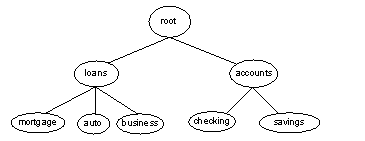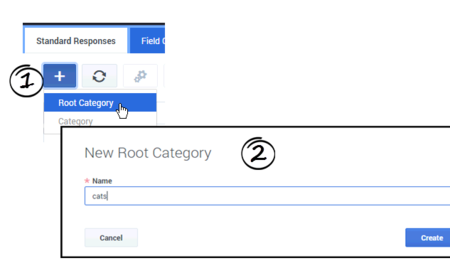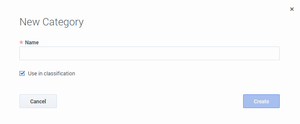Model
The Genesys Content Analyzer classification model is a resource that Classification Server uses to classify email messages and other text objects. A model is associated with a category structure; it contains a statistical representation of each category in the structure. To classify a new message, Classification Server compares it with the representation of each category. The server then returns a list of categories, each of which has a percentage rating of the confidence with which the message can be assigned to that category. Model files are created and refined by training, and they are stored in the Universal Contact Server (UCS) database.
Glossary
Training_Object
Called Training Data Object in release 8.5.2 and later. In Genesys Content Analyzer, a category tree, plus a group of text objects that are classified according to the category structure. Typically, the text objects are e-mail messages, but you can include also standard responses in the training object. Training operates on a training object in order to produce or refine a classification model, which can then be used to classify new e-mail messages.
Glossary
Contents
Plan and Build a Category Tree
A Category Tree consists of one or more root categories, each of which can have subcategories under it. Standard Responses are nodes under categories or subcategories in the Category Tree.
Step 1: Planning
We'll start by planning your Category Tree. To make your Standard Responses useful, you need root categories and subcategories that make sense in your business.
For example, you might create root categories for business units such as Sales, Service, and Billing. Then create useful subcategories. You might want to separate out customer type, such as Platinum, Gold, and Silver customers; or maybe it would work better for you to separate types of products, such as Pet Food, Pet Toys, and Cleaning Supplies; or you might want to respond differently to customers in different locations.
- Make sure that all the Standard Responses you need will fit within the categories you create.
To read more about how category structures work, see
[+] How Category Structures Work
Step 2: Build your Category Tree
You've done your planning. Now let's make it happen. For our example, we are going to create two new root categories, Cats and Dogs, with subcategories:
First we'll create our two root categories. Make sure you have selected the right Tenant, Contact Server, and Language, then:
- Click the New (plus sign) icon and select Root Category.
- Enter the root category name, Cat, and click Create.
- Repeat the same process to create the Dog root category.
- Now create the subcategories. For each subcategory, select the correct root category and then follow the same process as above, but select New > Category instead of New > Root Category.
More About Categories
- To change a category name, select it and click the Edit (gears) icon.
- To open the root category and show the categories beneath it, click a caret mark (>).
- To locate a category, use the search box located just above the list of category trees.
- To delete a category, select it and click the Delete (trashcan) icon.Deleting an upper-level category also deletes all the categories under it.
Characters Allowed in Names
The names of most eServices Manager and Content Analyzer objects can consist only of the alphanumeric characters supported in UTF-8, plus the characters shown in "Additional Characters Allowed in Object Names". This covers categories, standard responses, and screening rules (for eServices Manager), and training data objects and models (for Content Analyzer). Requirements for the names of other objects are listed below the "Additional Characters" table.
| Name | Character | Name | Character | Name | Character |
|---|---|---|---|---|---|
| Hyphen | - | Exclamation point | ! | Backslash | \ |
| Number sign, pound | # | Dollar sign | $ | Parentheses | ( ) |
| Caret | ^ | Asterisk | * | Question mark | ? |
| Underscore | _ | Curly brackets | { } | Space | |
| Angle brackets | < > | Period, full stop | . | At sign | @ |
Other Objects
- Field Code names have the same requirements as most other objects (alphanumeric characters supported in UTF-8, plus the characters in "Additional Characters Allowed in Object Names"), except that you must not use the sequences <$ and $>.
- Custom Variable names can consist only of Latin characters and numbers (A–Z, a–z, 0–9) plus underscore ( _ ).
- The names of test messages for Screening Rules can use any character in UTF-8.
- The Display Name of the Business Attribute called Language can consist only of Latin characters and numbers (A–Z, a–z, 0–9).
Name Length
- Categories, Field Codes, Custom Variables, Training Data Objects—64 characters
- Standard Responses, Screening Rules—128 characters
- Test messages for Screening Rules—254 characters
- Models—21 characters
Text Direction
The default direction for text is left to right. To change the direction, right-click the text field and select writing direction.




